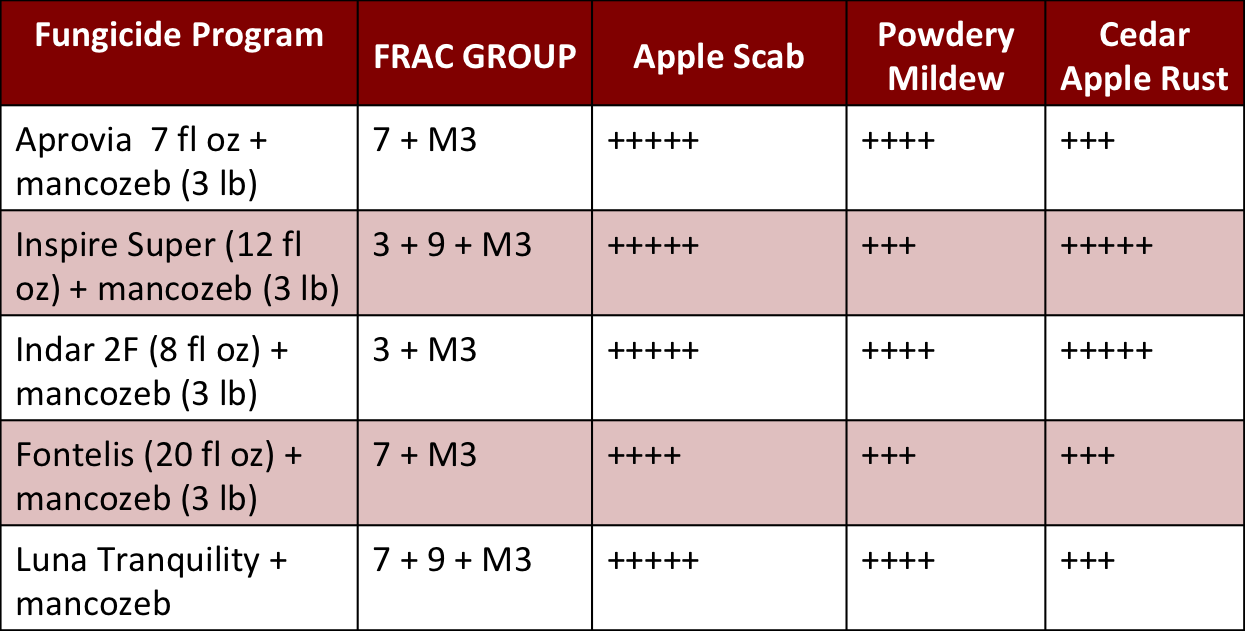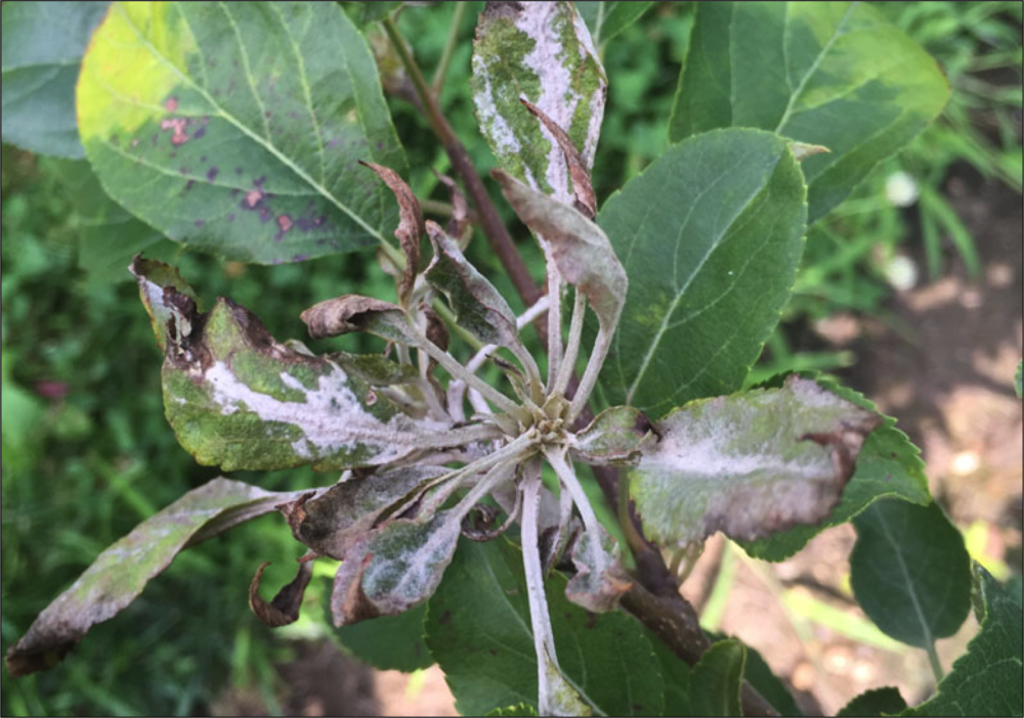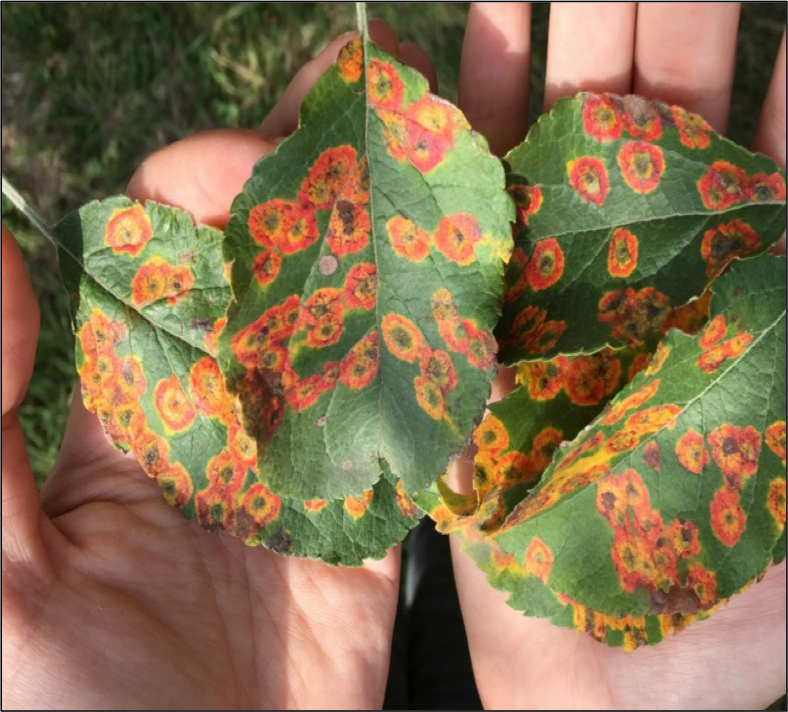Apple Disease Update: Tight Cluster and Pink Bud
go.ncsu.edu/readext?518990
en Español / em Português
El inglés es el idioma de control de esta página. En la medida en que haya algún conflicto entre la traducción al inglés y la traducción, el inglés prevalece.
Al hacer clic en el enlace de traducción se activa un servicio de traducción gratuito para convertir la página al español. Al igual que con cualquier traducción por Internet, la conversión no es sensible al contexto y puede que no traduzca el texto en su significado original. NC State Extension no garantiza la exactitud del texto traducido. Por favor, tenga en cuenta que algunas aplicaciones y/o servicios pueden no funcionar como se espera cuando se traducen.
Português
Inglês é o idioma de controle desta página. Na medida que haja algum conflito entre o texto original em Inglês e a tradução, o Inglês prevalece.
Ao clicar no link de tradução, um serviço gratuito de tradução será ativado para converter a página para o Português. Como em qualquer tradução pela internet, a conversão não é sensivel ao contexto e pode não ocorrer a tradução para o significado orginal. O serviço de Extensão da Carolina do Norte (NC State Extension) não garante a exatidão do texto traduzido. Por favor, observe que algumas funções ou serviços podem não funcionar como esperado após a tradução.
English
English is the controlling language of this page. To the extent there is any conflict between the English text and the translation, English controls.
Clicking on the translation link activates a free translation service to convert the page to Spanish. As with any Internet translation, the conversion is not context-sensitive and may not translate the text to its original meaning. NC State Extension does not guarantee the accuracy of the translated text. Please note that some applications and/or services may not function as expected when translated.
Collapse ▲The arrival of tight cluster signals the start of fungicide protection for diseases other than apple scab and frogeye leaf spot. Besides apple scab, protection against powdery mildew and cedar apple rust should be a focus for growers starting around the tight cluster stage.
Apple Scab Primary Infection: Beginning at the tight cluster/pink stage, ascopore maturity and discharge rapidly increases through bloom/petal fall. The release of these overwintering spores can result in a primary infection on any green tissue that is not protected with a fungicide. At MHCREC in Mills River, we initiated the model when approximately 50% of the buds reached green t\ip (February 28, 2018). As of April 2, 5 infection events (2 combined) were forecasted in Henderson Cty, NC: March 1, March 11-12, March 19-21, March 29-30, and April 2. Additional infection events are predicted for Edneyville on April 3, 4, and 7.
Powdery Mildew: In the southeastern United States, infection by the apple powdery mildew pathogen, Podosphaera leucotricha, is often most consequential to leaves rather than fruit. However, on more susceptible cultivars such as Rome Beauty, JonaGold, or HoneyCrisp, powdery mildew symptoms on fruit-net like russeting- can occur. Oftentimes such russeting can be mistaken for frost or chemical injury.

Net-like russeting on fruit caused by the apple powdery mildew pathogen, Podosphaera leuctricha. Photo Credits: Keith Yoder, Virginia Tech. Photo previously appeared in the APS Compendium of Apple and Pear Diseases, First Edition.
The powdery mildew pathogen overwinters in dormant buds that were infected during the previous growing season. The infected buds usually open a few days later than healthy buds which means that susceptible tissue is already present once powdery mildew spores (conidia) are produced. Infected primary shoots (shoots in which dormant bud was infected) will be stunted, malformed, and have a white-silver color.
Secondary powdery mildew infections on foliage will appear as white fuzzy tufts on either side of the leaf. Older mildew lesions may look red/purple in color. Curling of the leaves inward along the mid-vein is also characteristic of powdery mildew infections on apple. Preventative fungicide applications targeting foliar mildew should begin at tight cluster. Flower/fruit infections can occur as early as pink.
Apple Rusts: Fungicide applications targeting cedar, quince, or hawthorn rusts should also begin at tight cluster. Leaves are most susceptible at 4 to 8 days of age, and whereas fruit are most susceptible to infection between tight cluster and petal fall. Because these rust pathogens need two different hosts to complete their life cycle, infection may not be as severe in orchards that are several miles (at least 2) from the alternate host (e.g. Eastern Red Cedars or other susceptible junipers). Sterol Demethylation Inhibitor fungicides (FRAC 3) have historically been the most efficacious and continue to be the most efficacious against the apple rusts.
Tight Cluster and Pink: Fungicide Suggestions

Possible fungicide options for tight cluster and pink growth stages. This is not a complete list-Please check the 2018 Integrated Management Guide for Commercial Orchards in the Southeast for additional options. Disclaimer: Those contributing to this newsletter have made every effort to provide accurate and up-to-datemanagement recommendations. However, please keep in mind that pesticide regulations are constantly changing and thus recommendations set forth in this publication should not serve as a substitute for an actual pesticide label. In addition, factors such as phenology, weather, cultivar, and tank mixtures might affect the efficacy and safety of an agrichemical product. Again, please read the label prior to use.







